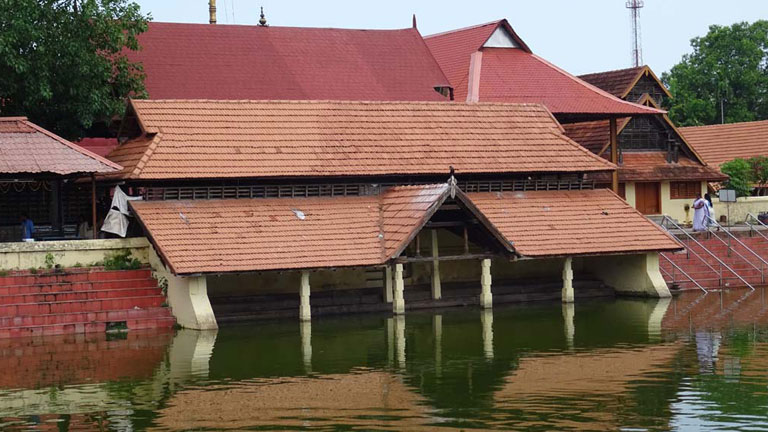Ambalappuzha Sri Krishna Temple, situated in the tranquil town of Ambalappuzha in Kerala, India, is a hallowed shrine dedicated to Lord Krishna. It is renowned not only for its spiritual significance but also for its captivating architecture and cultural heritage. This temple is deeply ingrained in the religious fabric of Kerala and holds a special place in the hearts of devotees and travelers alike. In this article, we will delve into the history, architecture, rituals, and cultural importance of Ambalappuzha Sri Krishna Temple.
Historical Background
Ambalappuzha Sri Krishna Temple has a history that traces back to the 17th century. It was constructed by Chembakasserry Pooradam Thirunal-Devanarayanan Thampuran, the ruler of Chembakasserry, who was an ardent devotee of Lord Krishna. The temple has since been a center of worship and cultural activities in the region.
Architectural Marvel
The temple’s architecture is a splendid example of traditional Kerala temple architecture, known for its grandeur and intricate woodwork. Some of its key architectural features include:
- Gopuram: The temple entrance is marked by a majestic gopuram (tower) adorned with intricate sculptures and carvings, which is a hallmark of Kerala temple architecture.
- Sreekovil: The sanctum sanctorum, known as the sreekovil, houses the deity Lord Krishna, who is portrayed in the form of Unnikrishna (child Krishna). The sreekovil is adorned with finely carved wooden panels and a beautiful silver-plated flagstaff.
- Murals: The temple is renowned for its exquisite mural paintings, especially those that depict the stories of Lord Krishna, including the famous “Gajendra Moksham” mural, illustrating the rescue of an elephant from a crocodile by Lord Krishna.
- Ambalappuzha Palpayasam: One of the unique features of the temple is the daily offering of a sweet milk porridge known as “Ambalappuzha Palpayasam” to the deity. This tradition is said to have been initiated by the erstwhile ruler of Chembakasserry, who had a divine vision of Lord Krishna partaking in this sweet delicacy.
Significance and Rituals
- Ambalappuzha Palpayasam: The daily offering of Ambalappuzha Palpayasam to Lord Krishna is a significant ritual. It is prepared in enormous quantities and is distributed to devotees as prasad (consecrated food). The palpayasam is renowned for its delicious taste and is considered a symbol of devotion.
- Utsavams (Festivals): The temple hosts various festivals and processions throughout the year, including the annual “Ambalappuzha Arattu” festival. These events are marked by colorful processions, traditional music and dance performances, and elaborate rituals.
Cultural Importance
Ambalappuzha Sri Krishna Temple is not only a place of worship but also a hub of cultural activities. It has played a significant role in preserving and promoting the traditional art forms of Kerala, including classical music, dance, and literature. The temple’s cultural programs and events attract artists and enthusiasts from across the state.
Visiting Tips
- Visitors should dress modestly when visiting religious sites in India, covering shoulders and knees.
- Be respectful of the temple’s rules and customs, including removing footwear before entering the temple premises.
How to Reach
- By Air: The nearest airport is Cochin International Airport, approximately 85 kilometers (52.8 miles) away.
- By Rail: Alappuzha Railway Station is the nearest railway station, located about 14 kilometers (8.7 miles) from Ambalappuzha.
- By Road: Ambalappuzha is well-connected by road, and visitors can reach the town by taxi or private transport from nearby towns like Alappuzha and Kottayam.
Conclusion
Ambalappuzha Sri Krishna Temple is a sacred abode of Lord Krishna that resonates with spirituality and artistic beauty. Its unique traditions, including the offering of Ambalappuzha Palpayasam, make it a place of both religious and cultural significance. A visit to this temple not only allows you to connect with the divine but also offers a glimpse into the rich cultural tapestry of Kerala.

